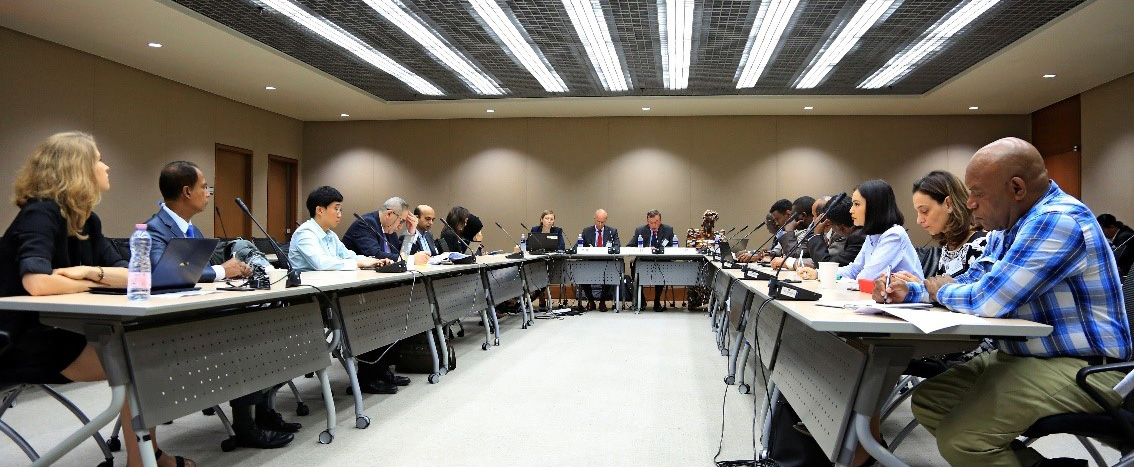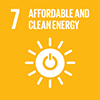Side Events & Exhibitions
 Organized in the margins of the UN High-level Political Forum on Sustainable Development (HLPF) every July, the Partnership Exchange is United Nations' annual global gathering for reviewing existing multi-stakeholder partnerships and voluntary commitments, and launching new ones, in supporting the implementation of the Sustainable Development Goals.
Feeding into the Partnership Exchange, the SDG7 Multi-stakeholder Partnership Exchange was a special day-long programme during the Global SDG7 Conference (Bangkok, 21-23 February 2018) designed to facilitate sharing of experiences from on-going partnerships and provide a global launching pad for new partnerships and voluntary commitments from all stakeholders, in support of the achievement of SDG7. This one-day programme was structured around a series of side events featuring diverse partnerships and experiences from across the world to highlight innovative approaches in driving affordable, reliable, sustainable and modern energy for all.
A total of 27 side events were held at the SDG7 Multi-stakeholder Partnership Exchange. Side events complemented the official programme by providing all stakeholders and participants the opportunity to have informal, inclusive discussions and propose policy recommendations, strategies and new initiatives to accelerate the implementation of SDG7 and its interlinked SDGs. All 27 side events were held at the United Nations Conference Center at ESCAP.
Side events were organised by multi-stakeholders, including governments, businesses, civil society, Member States, UN agencies and other international organizations. In most cases, side events were co-organized by multiple entities, bringing different perspectives and in line with the inclusive approach of the Global SDG7 Conference.
The SDG7 Multi-stakeholder Partnership Exchange covered a broad range of topics in relation to SDG7 and its interlinkages for sustainable development. Several side events focused on the three targets of energy access, energy efficiency and renewable energy, while others focused on means of implementation, including international cooperation, technology and finance. Sharing of regional and national perspectives was facilitated through a series of side events focusing on regional-level implementation and the issues pertinent to respective regions and countries in special circumstances such as Least Developed Countries, Landlocked Developing Countries and Small Island Developing States.
In-depth discussions around SDG7 interlinkages, including gender, water, health or displacement, were also at the core of numerous side events. Not least, side events allowed to look at SDG7 through different lenses, facilitating inclusive discussions on the role and opportunities for diverse constituencies, including civil society, the private sector, and vulnerable communities around the globe.
A significant number of side events put forward coherent policy recommendations and strategies to accelerate implementation of SDG7 and its interlinkages. Although the proposals varied between side events, some recurrent themes can be identified, including the need for integrated cross-sectoral approaches, strengthened public-private partnerships, enhanced capacities and knowledge sharing. These themes are also evident in the Outcome Summary of the Conference, reflecting a broad recognition of the priority actions moving forward.
Organized in the margins of the UN High-level Political Forum on Sustainable Development (HLPF) every July, the Partnership Exchange is United Nations' annual global gathering for reviewing existing multi-stakeholder partnerships and voluntary commitments, and launching new ones, in supporting the implementation of the Sustainable Development Goals.
Feeding into the Partnership Exchange, the SDG7 Multi-stakeholder Partnership Exchange was a special day-long programme during the Global SDG7 Conference (Bangkok, 21-23 February 2018) designed to facilitate sharing of experiences from on-going partnerships and provide a global launching pad for new partnerships and voluntary commitments from all stakeholders, in support of the achievement of SDG7. This one-day programme was structured around a series of side events featuring diverse partnerships and experiences from across the world to highlight innovative approaches in driving affordable, reliable, sustainable and modern energy for all.
A total of 27 side events were held at the SDG7 Multi-stakeholder Partnership Exchange. Side events complemented the official programme by providing all stakeholders and participants the opportunity to have informal, inclusive discussions and propose policy recommendations, strategies and new initiatives to accelerate the implementation of SDG7 and its interlinked SDGs. All 27 side events were held at the United Nations Conference Center at ESCAP.
Side events were organised by multi-stakeholders, including governments, businesses, civil society, Member States, UN agencies and other international organizations. In most cases, side events were co-organized by multiple entities, bringing different perspectives and in line with the inclusive approach of the Global SDG7 Conference.
The SDG7 Multi-stakeholder Partnership Exchange covered a broad range of topics in relation to SDG7 and its interlinkages for sustainable development. Several side events focused on the three targets of energy access, energy efficiency and renewable energy, while others focused on means of implementation, including international cooperation, technology and finance. Sharing of regional and national perspectives was facilitated through a series of side events focusing on regional-level implementation and the issues pertinent to respective regions and countries in special circumstances such as Least Developed Countries, Landlocked Developing Countries and Small Island Developing States.
In-depth discussions around SDG7 interlinkages, including gender, water, health or displacement, were also at the core of numerous side events. Not least, side events allowed to look at SDG7 through different lenses, facilitating inclusive discussions on the role and opportunities for diverse constituencies, including civil society, the private sector, and vulnerable communities around the globe.
A significant number of side events put forward coherent policy recommendations and strategies to accelerate implementation of SDG7 and its interlinkages. Although the proposals varied between side events, some recurrent themes can be identified, including the need for integrated cross-sectoral approaches, strengthened public-private partnerships, enhanced capacities and knowledge sharing. These themes are also evident in the Outcome Summary of the Conference, reflecting a broad recognition of the priority actions moving forward.



